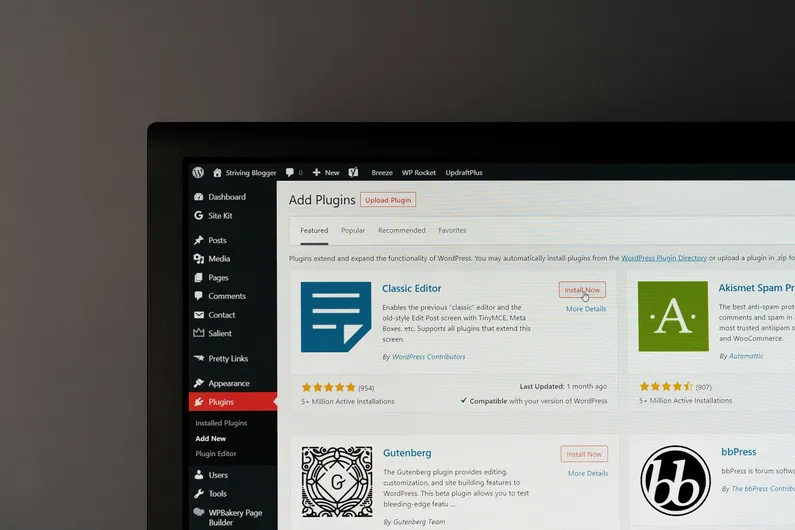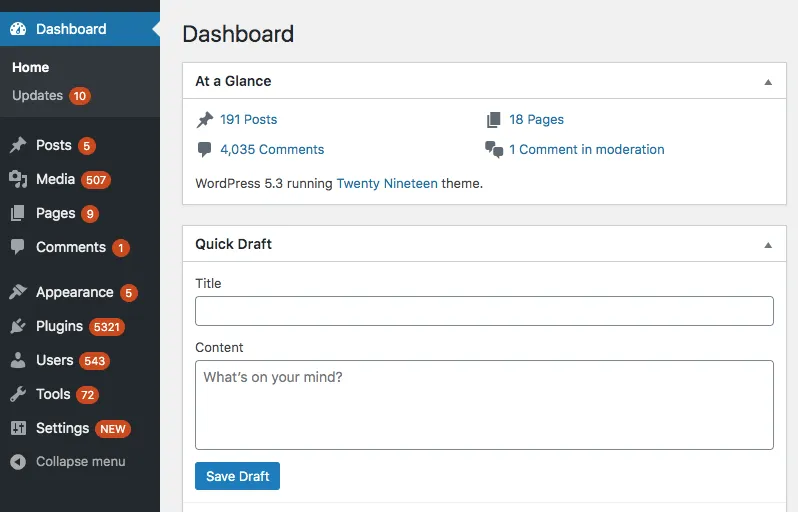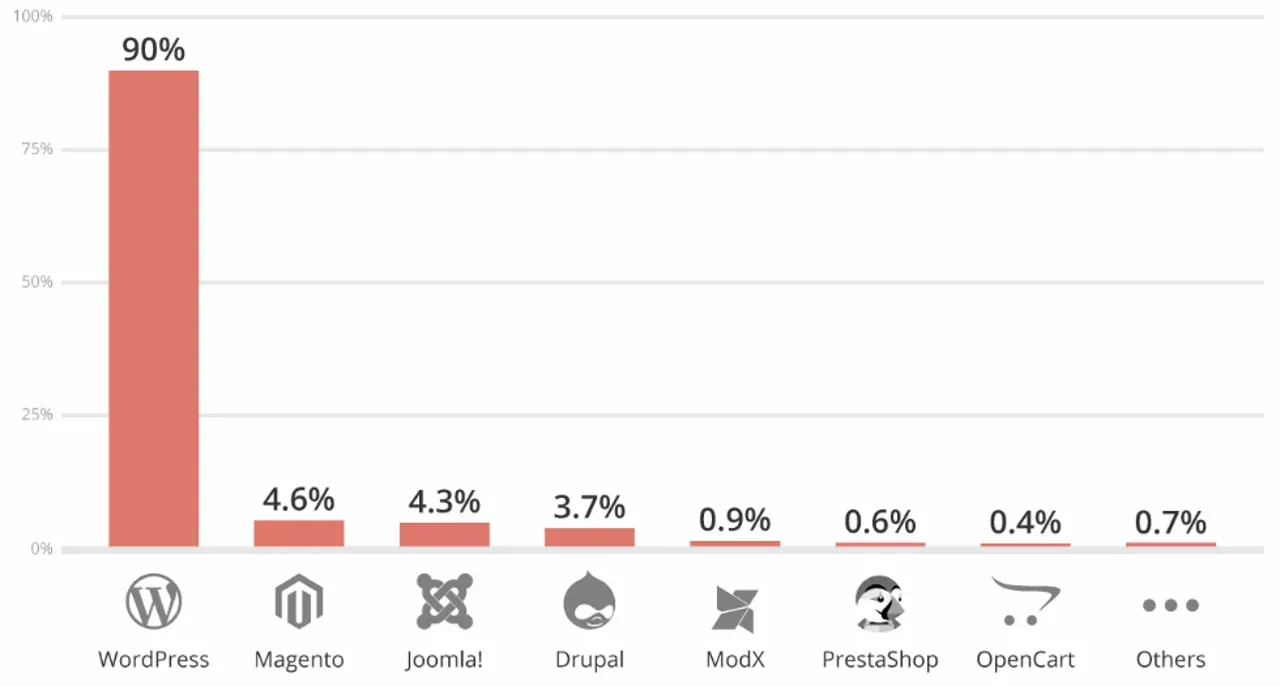Why WordPress is Failing Your Business in 2025

As a small business owner in the Mazamet and Tarn region, you’ve likely been told that WordPress is the simple, affordable choice for your website. After all, it powers over 43% of all websites globally. But in 2025, this popular platform could be actively holding your business back. Here’s why relying on WordPress might be costing you customers, revenue, and peace of mind.
Performance Issues That Drive Customers Away
Your website’s loading speed isn’t just a technical detail—it directly impacts your bottom line. Recent studies show that 53% of mobile users abandon sites that take more than three seconds to load (Source: Think With Google, 2023). WordPress sites, especially those loaded with plugins and complex themes, frequently suffer from bloated code and excessive HTTP requests.
In 2025, with Core Web Vitals now a dominant ranking factor, WordPress sites often struggle to achieve good PageSpeed scores without significant optimization work. While your competitors with custom-coded websites enjoy lightning-fast performance, your WordPress site might be frustrating potential customers and sending them elsewhere.
The “User-Friendly” Illusion
WordPress markets itself as intuitive, but ask yourself: how much time have you wasted fighting with its interface? What starts as a “simple” dashboard quickly becomes overwhelming when you need to create something truly professional.
Ideally, core and plugin updates and maintenance should be carried out once a month, and a site health check-up (broken links, indexing etc.) once a quarter. This is time you could be investing in growing your business instead. The promise of easy updates often transforms into a technical nightmare when plugins conflict or updates break your site’s functionality and customers suddenly find themselves looking at a blank page when visiting your website.

A WordPress dashboard showing dozens of plugin and theme update notifications
The Third-Party Plugin Vulnerability
The recent controversy surrounding WP Engine has exposed a critical weakness in the WordPress ecosystem. In September 2024, WordPress.org banned WP Engine, a well-know hosting WordPress hosting provider, from accessing its resources, affecting over 1.5 million websites and leaving business owners scrambling for solutions.
This incident highlights a fundamental problem: WordPress sites often rely heavily on third-party plugins and hosting providers for core functionality. When policy changes or conflicts arise between these entities, your business website becomes collateral damage.
According to a 2024 WP Security Report, the average WordPress site uses 20-25 plugins, creating a complex web of dependencies that can collapse at any moment.
Limited Integration Capabilities
In today’s digital ecosystem, your website needs to work seamlessly with numerous third-party services—from payment processors to CRM systems and marketing tools. WordPress limits you to its plugin ecosystem, which can be problematic for several reasons:
- Many plugins haven’t been updated for the latest WordPress version
- Security vulnerabilities in poorly maintained plugins (over 4,000 WordPress plugin vulnerabilities were reported in 2024 alone)
- Incompatibility between essential plugins
- Performance degradation with each additional plugin
I have recently carried out translation work for a Canadian client running a plugin-based e-commerce website. Everything was going well until we realized that the shopping cart and the review sections were managed by third-party plugins and those had not been designed with localization features in mind. That cost the client many hours and dollars in unforeseen development work.
Modern businesses need websites that can integrate with any service they require, now or in the future, without compromising security, scalability or performance.
Accessibility Shortcomings
Web accessibility and digital inclusion isn’t optional in 2025—it’s a business necessity. After the European Accessibility Act expanded its requirements in 2025, businesses of all sizes must ensure their digital presence is accessible to everyone. Accessibility in this context means making sure that a website can be used by everyone, including people with disabilities through the use of screen readers technology or navigating the website with a keyboard only. It’s a topic that I take at heart, and it infuriates me to see a vast majority of websites not complying with basic requirements.
Here’s me demonstrating keyboard navigation on Montagne Noire Web Studio’s website. We can clearly see the white outline around the links as I tab through them, as well as navigating the menus with arrow and enter keys.

Unfortunately, many WordPress themes and plugins fall short of WCAG 2.2 compliance standards. These guidelines cover a wide range of recommendations for making web content more accessible.
A recent analysis by the WebAIM Million project found that WordPress sites had 13% more accessibility errors than custom-coded alternatives and that, more generally speaking, across the one million home pages tested, 56,791,260 distinct accessibility errors were detected—an average of 56.8 errors per page. These accessibility barriers have notable end user impact, and which have a very high likelihood of being WCAG 2.2 Level A/AA conformance failures.
WordPress themes mostly ignore these guidelines. Why? Because accessibility is hard to do well. It costs time and money to implement, and it’s not a feature that sells themes. But in 2025, accessibility is no longer a “nice-to-have”—it’s a legal requirement, a competitive advantage and, I must add, a moral obligation.
Code Bloat: The Hidden Performance Killer
WordPress and its ecosystem of plugins and page-building tools create what developers call “code bloat”: unnecessary or redundant code that weighs down your website. Because the underlying HTML code has to work for all cases, it is not optimized for your particular website and thus, a lot of unnecessary code is being generated, adding to the overall weight of the page.
What’s more, a 2025 analysis by HTTP Archive revealed that the average WordPress site loads over 2MB of JavaScript—four times more than what’s typically needed for a business website and that each script takes 3.3 seconds to load. This bloat makes your site slower and more difficult for Google’s indexing robots to crawl your website efficiently, which has a direct impact on your SEO.
SEO Limitations
Speaking of SEO, while WordPress offers user-friendly SEO functionality through plugins like Yoast, that easily allows the user to add meta titles and meta descriptions for pages, these are just the tip of the SEO iceberg. Plugins usually do not offer, or at a premium, features like rich snippets, hreflang tags, og tags, or generally speaking the fine-tuned control that’s possible with custom-coded sites made by a professional developer.
Google’s 2025 algorithm updates have also placed even greater emphasis on:
- Page experience metrics
- Structured data implementation
- Site architecture
- Mobile responsiveness
WordPress’s one-size-fits-all approach makes it difficult to implement advanced SEO strategies tailored to your specific business needs and local Mazamet and Tarn market.
Security Vulnerabilities
WordPress sites are prime targets for hackers, with WP Scan’s database documenting over 24,000 WordPress-specific vulnerabilities. In fact, according to Sucuri’s 2024 Website Threat Research Report , WordPress accounts for 94% of all CMS-based hacking attempts. Sucuri experts blamed most of the hacks on vulnerabilities in plugins and themes, misconfiguration issues, and a lack of maintenance by webmasters, who often forget to update their CMS, themes, and plugins. Each plugin adds another potential entry point for attackers. For small businesses without dedicated IT security teams, this means constant vigilance, regular updates, and the persistent anxiety of a potential breach—all unnecessary complications when more secure alternatives exist.

WordPress accounted for 90 percent of all hacked CMS sites in 2024. Image: Sucuri
The CMS Appeal: A Valid but Limited Benefit
It’s worth acknowledging WordPress’s primary strength: its content management system (CMS) that allows users to update content themselves. For businesses that publish frequent blog posts or need regular menu updates, having control over their content and the DIY aspect may seem attractive. However, this benefit comes with significant trade-offs in performance, security, and maintenance as outlined above.
At Montagne Noire web studio, we recognize the appeal of client content control, which is why we offer targeted CMS integration for specific dynamic sections of your website like blogs or menus, while keeping the core site structure completely static (find out more about static vs. dynamic in our blog post). This hybrid approach delivers the best of both worlds: the freedom to update time-sensitive content yourself without sacrificing site performance or security. For most small businesses, our unlimited edits model actually proves more cost-effective and stress-free than wrestling with a full WordPress CMS and its associated learning curve. If you’re going to pay us 100€ / month, you might as well let us take care of those edits for you!
A Better Alternative for your small business website in 2025
At Montagne Noire web studio, we’ve embraced modern technologies like Astro, Tailwind CSS, and hand-coded HTML/JavaScript to create websites that outperform WordPress in every category.
What we offer
- Lightning-fast loading speeds (typically under 1 second)
- Complete security with virtually no hack potential
- Seamless integration with any third-party service
- Full accessibility compliance
- Superior SEO performance
- Truly unique designs that capture your brand essence
- All with our all-inclusive €100/month subscription model that includes ongoing maintenance, updates and unlimited content edits
Making the Switch: Easier Than You Think
Many business owners worry that moving away from WordPress will be complicated, expensive, or disrupt their online presence. The reality is quite different. At Montagne Noire web studio, we’ve developed a seamless migration process that preserves your content, maintains your SEO rankings, and ensures zero downtime for your business. Expect your new website to be up and running in 4 weeks max.
The sooner you migrate away from WordPress, the sooner you’ll experience the benefits of a faster, more secure, and truly distinctive website that works for your business, not against it.
Contact Montagne Noire web studio today to discuss how a custom-coded, performance-optimized website can transform your online presence and drive real business growth.